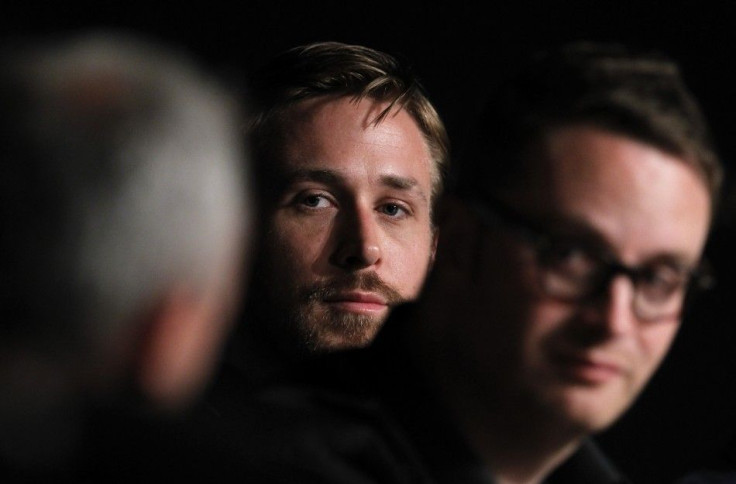'Drive': Neo-Noir With a Shot of Adrenaline (and Albert Brooks)

Conventional wisdom dictates that trying too hard to be cool guarantees failure. But Drive somehow achieves exactly what it sets out to do -- which is be the coolest movie you have seen this summer, or even this year.
East Los Angeles is the stage for this action/gangster/neo-noir hybrid that never quite lets you pin down exactly where in time it's meant to take place. The setting for Drive is contemporary-ish, and we know from cues in the script that it's at least the 90s, but how far beyond then is not entirely clear.
Ryan Gosling channels his best Steve McQueen as a shadowy, mythical yet marginal creature so entrenched in archetype he is not given a proper name. Though it's his supernatural driving ability that brings him more than his fair share of admiration -- and trouble -- you get the sense he's got a few more aces up the sleeve of his omnipresent satin jacket embellished with a scorpion. (This is apparently important: I only noticed one scene where he wasn't wearing it outright, and even then the viper was on self-conscious display.)
We meet Driver -- as he is listed in the credits -- in a slick, stirring cold open where he gives chilling instructions over the phone and then doesn't speak again for what feels like 20 minutes. What follows is a muted but extraordinarily intense getaway sequence -- though the stakes get higher later in the movie, this is the scene that will leave your heart pounding the longest.
Danish director Nicolas Winding Refn gets maximum mileage from a spare, well-crafted script (adaprted by Hossein Amini from James Sallis' novel); credit is equally due Refn and the riches of casting bestowed on him. Gosling, Bryan Cranston, Carey Mulligan, Ron Perlman (!), Christina Hendricks, and an astonishing Albert Brooks all bring their A-games (most don't have another). Brooks, who may have earned himself an encore career, is more sympathetic as a diabolical villain than he is as the put-upon neurotic that we've all come to love -- but that might be exactly why the role works so well.
One of the film's many strengths is its ease in establishing its characters quickly and economically -- just as our hero never uses any more words than he needs to, the filmmakers only tell us what we need to know. Driver's boss and only friend, Shannon (Cranston), hasn't had a lot of luck in life, but as he says in a line that reveals much more, he's paid his debts. Driver's love interest Irene (Mulligan) will not let a youthful misstep make her bitter; her jailbird husband (Oscar Isaac) is desperate enough to hold on to his family that he will deny himself a chance at redemption.
Drive's most obvious weakness it the unencumbered violence that increases in intensity and gratuity towards the end of the film. While a few of the acts (or near-acts) have a Tarantino-esque delight in their sadism, the extravagant bloodbathing clashes with -- and undermines -- the seething restraint of the movie's first half.
Since our mythical hero is a man with no past, when people eventually die by his hand (or in one case, his foot) we're not sure if he is capable of violence only when his back is against the wall. Have we met him during a time of extraordinary circumstance, or is this kind of thing par for the course? It seems the filmmakers themselves aren't sure. Driver and his only friend seem to have a long enough history, and he is somewhat established in both his professions, but there are also clues to a bare-boned, nomadic existence led by people with a long trail of trouble behind them.
The film gorgeous to consume, and not just visually -- the pace is pitch-perfect and the sound editing is worthy of the highest praises. This will help make Drive an easy target for accusations of style over substance. But those accusations will not be entirely fair.
Drive never intends to pass off derivative as original, which is admirable, and so is the film's ability to borrow from John Hughes as effectively as Scorcese, Polanski, and Melville. But the homage-paying -- like the gratuitous gore -- could have used another round of edits.
© Copyright IBTimes 2024. All rights reserved.






















